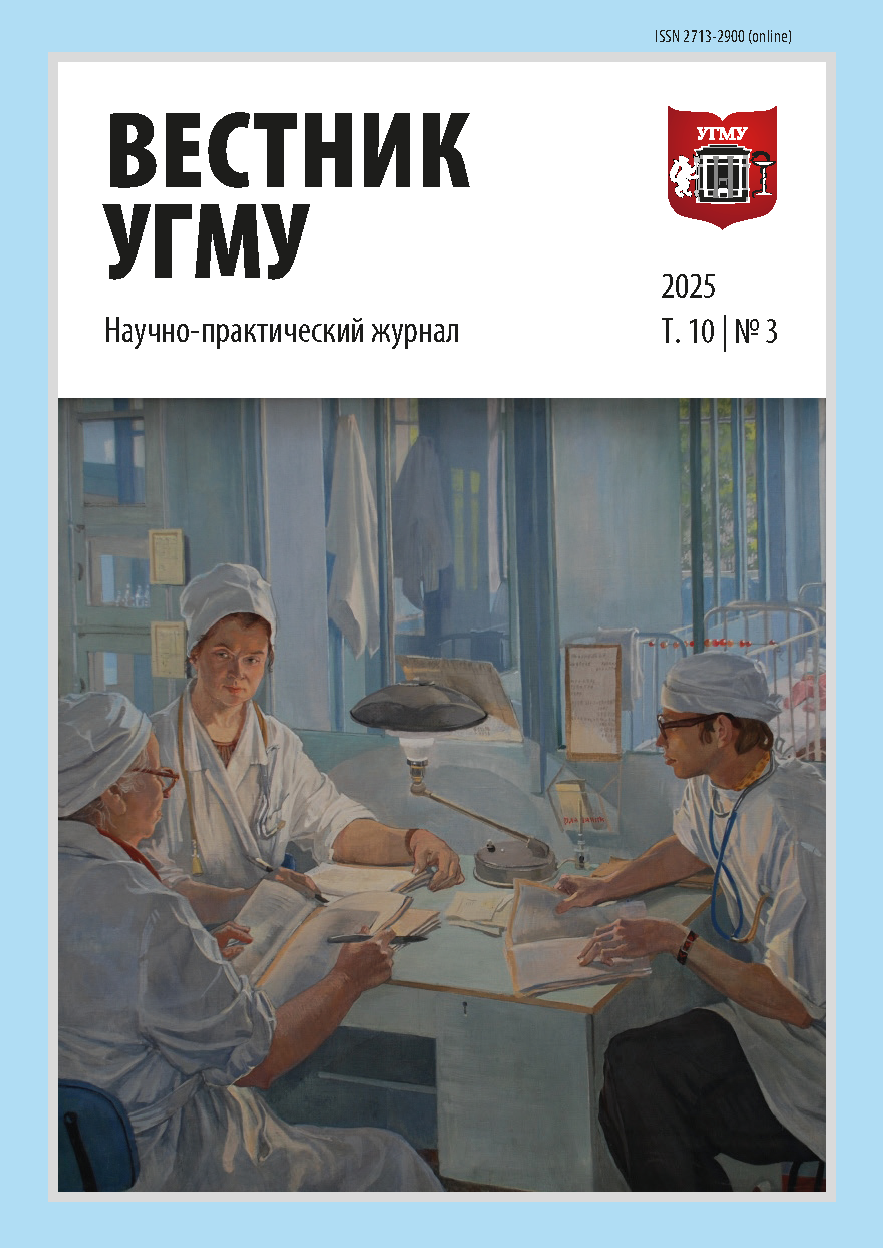Abstract
Dent’s disease type 2 is a rare X-linked inherited tubulopathy caused by mutations in the OCRL gene. The disease is characterized by dysfunction of the proximal renal tubules and presents with low-molecular-weight proteinuria, hypercalciuria, nephrocalcinosis, disturbances in phosphate metabolism, renal osteopathy, and progressive decline in kidney function. Clinical manifestations vary depending on age at onset and severity of tubular dysfunction. In some cases, extrarenal symptoms similar to those observed in Lowe syndrome may occur. Early diagnosis plays a crucial role in timely initiation of therapy and slowing disease progression. Molecular genetic testing is essential for confirming the diagnosis, identifying the specific mutation, and providing accurate genetic counseling for the family. This article presents clinical cases of two brothers aged 9 and 7 years diagnosed with Dent’s disease type 2. Both children were followed by a pediatric nephrologist due to persistent proteinuria and hypercalciuria. Molecular genetic analysis revealed a pathogenic mutation in the OCRL gene, confirming the diagnosis. The patients are currently receiving nephroprotective therapy. These cases illustrate the diagnostic challenges associated with Dent’s disease in the absence of specific clinical signs and highlight the importance of a multidisciplinary approach. Special attention should be paid to children presenting with unexplained proteinuria and disturbances in mineral metabolism in order to promptly suspect Dent’s disease and initiate appropriate diagnostic evaluation.
Acknowledgments
The authors would like to express their gratitude to the Children’s City Clinical Hospital No. 9 (Ekaterinburg, Russia), represented by its chief physician I. P. Ogarkov, for providing the opportunity to diagnose, treat and monitor patients. We are also grateful to the staff of the laboratory of molecular genetic diagnostics for conducting genetic tests and interpreting the results. We would also like to thank the team of nephrologists, pediatricians, and nursing staff for their assistance in collecting patient data and conducting comprehensive examinations. Furthermore, we would like to extend our thanks to the patient’s family for their cooperation and consent to using clinical data for research purposes.
For citation
Ushakova RA, Pankratova IB, Chusovitina SS. Hereditary tubulopathy in the practice of a pediatrician: A clinical case of type 2 Dent’s disease in members of the same family. USMU Medical Bulletin. 2025;10(3):e00176. (In Russ.). DOI: https://doi.org/10.52420/usmumb.10.3.e00176. EDN: https://elibrary.ru/JXURZH.
References
Егорова ВБ, Мунхалова ЯА, Новоприезжая ДА, Березкина ДЗ. Клинический случай: болезнь Дента у ребенка. Вестник Северо-Восточного федерального университета имени М. К. Аммосова. Серия «Медицинские науки». 2023;(3):27–33. [Egorova VB, Munkhalova YA, Novopriezzhaya DA, Berezkina DZ. Clinical case: Dent disease in a child. Vestnik of North-Eastern Federal University. Medical Sciences. 2023;(3):27–33. (In Russ.)]. DOI: https://doi.org/10.25587/SVFU.2023.54.34.003.
Приходина ЛС, Папиж СВ, Баширова ЗР, Людвиг М. Являются ли мамы мальчиков с болезнью Дента бессимптомными носителями Х-сцепленной тубулопатии? Нефрология. 2018;22(2):74–80. [Prikhodina LS, Papizh SV, Bashirova ZR, Ludwig M. Are mothers of boys with Dent’s disease asymptomatic carriers for X-linked tubular disorder? Nephrology (Saint-Petersburg). 2018;22(2):74–80. (In Russ.)]. DOI: https://doi.org/10.24884/1561-6274-2018-22-2-74-80.
Османов ИМ, Захарова ИН, Кольбе ОБ, Мумладзе ЭБ, Бекмурзаева ГБ, Тамбиева ЕВ. Первичные тубулопатии. Российский вестник перинатологии и педиатрии. 2018;63(1):81–89. [Osmanov IM, Zakharova IN, Kolbe OB, Mumladze EB, Bekmurzaeva GB, Tambieva EV. Primary tubulopathies. Russian Bulletin of Perinatology and Pediatrics. 2018;63(1):81–89. (In Russ.)]. DOI: https://doi.org/10.21508/1027-4065-2018-63-1-81-89.
Белькевич АГ, Козыро ИА, Сукало АВ. Катамнез пациентов с первичными тубулопатиями. Российский вестник перинатологии и педиатрии. 2021;66(4):252. [Belkevich AG, Kozyro IA, Sukalo AV. Catamnesis of patients with primary tubulopathies. Russian Bulletin of Perinatology and Pediatrics. 2021;66(4):252. (In Russ.)]. EDN: https://elibrary.ru/HHWBMN.
Верижникова ЛН, Громова ГГ. Наследственная тубулопатия: механизмы формирования патологии. Клиническая и дифференциально-диагностическая значимость признаков в наследовании представленного клинического случая. Вестник СурГУ. Медицина. 2020;(1):80–85. [Verizhnikova LN, Gromova GG. Hereditary tubulopathy: Mechanisms of pathology formation, clinical and differential diagnostic significance of signs in the inheritance of the presented clinical case. Vestnik SurGU. Meditsina. 2020;(1):80–85. (In Russ.)]. DOI: https://doi.org/10.34822/2312-3419-2020-1-80-85.
Мальцев СВ, Сафина АИ, Михайлова ТВ. Гипофосфатемический рахит у детей — клинические и генетические аспекты, подходы к терапии. Практическая медицина. 2021;19(1):38–49. [Maltsev SV, Safina AI, Mikhailova TV. Hypophosphatemic rickets in children – clinical and genetic aspects, approaches to therapy. Practical Medicine. 2021;19(1):38–49. (In Russ.)]. DOI: https://doi.org/10.32000/2072-1757-2021-1-38-49.
Амангулова СА, Русакова ЮС, Муруева ЯС. Клинический случай: наследственная тубулопатия. Научный медицинский вестник Югры. 2019;(2):226–227. [Amangulova SA, Rusakova YuS, Murueva YaS. Clinical case: Hereditary tubulopathy. Nauchnyi meditsinskii vestnik Yugry. 2019;(2):226–227. (In Russ.)]. EDN: https://elibrary.ru/ZRGWXH.
Kulu B, Sancakli O, Sakallioglu O. A novel mutation c.2010delG of CLCN5 gene associated with Dent disease-1 in an 11-year-old male with nephrolithiasis and nephrocalcinosis. Russian Bulletin of Perinatology and Pediatrics. 2018;63(2):70–72. DOI: https://doi.org/10.21508/1027-4065-2018-63-2-70-72.
Dent CE, Friedman M. Hypercalcuric rickets associated with renal tubular damage. Archives of Disease in Childhood. 1964;39(205):240–249. DOI: https://doi.org/10.1136/adc.39.205.240.
Hoopes RR Jr, Raja KM, Koich A, Hueber P, Reid R, Knohl SJ, et al. Evidence for genetic heterogeneity in Dent’s disease. Kidney International. 2004;65(5):1615–1620. DOI: https://doi.org/10.1111/j.1523-1755.2004.00571.x.
This work is licensed under a Creative Commons Attribution-NonCommercial-ShareAlike 4.0 International License
Copyright © 2025 Ushakova R. A., Pankratova I. B., Chusovitina S. S.





